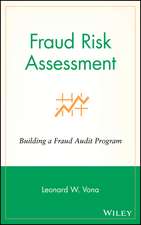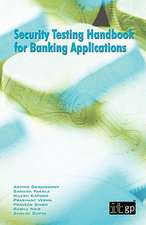Bank Liquidity Creation and Financial Crises
Autor Allen N. Berger, Christa Bouwmanen Limba Engleză Hardback – 16 noi 2015
Authors Allen Berger and Christa Bouwman examine ways to measure bank liquidity creation, how much liquidity banks create in different countries, the effects of monetary policy (including interest rate policy, lender of last resort, and quantitative easing), the effects of capital, the effects of regulatory interventions, the effects of bailouts, and much more. They also analyze bank liquidity creation in the US over the past three decades during both normal times and financial crises.
Narrowing the gap between the "academic world" (focused on theories) and the "practitioner world" (dedicated to solving real-world problems), this book is a helpful new tool for evaluating a bank’s performance over time and comparing it to its peer group.
- Explains that bank liquidity creation is a more comprehensive measure of a bank’s output than traditional measures and can also be used to measure bank liquidity
- Describes how high levels of bank liquidity creation may cause or predict future financial crises
- Addresses questions of research and policy interest related to bank liquidity creation around the world and provides links to websites with data and other materials to address these questions
- Includes such hot-button topics as the effects of monetary policy (including interest rate policy, lender of last resort, and quantitative easing), the effects of capital, the effects of regulatory interventions, and the effects of bailouts
Preț: 356.67 lei
Preț vechi: 387.69 lei
-8% Nou
Puncte Express: 535
Preț estimativ în valută:
68.27€ • 74.18$ • 57.38£
68.27€ • 74.18$ • 57.38£
Carte tipărită la comandă
Livrare economică 14-28 aprilie
Preluare comenzi: 021 569.72.76
Specificații
ISBN-13: 9780128002339
ISBN-10: 0128002336
Pagini: 294
Dimensiuni: 152 x 229 x 20 mm
Greutate: 0.59 kg
Editura: ELSEVIER SCIENCE
ISBN-10: 0128002336
Pagini: 294
Dimensiuni: 152 x 229 x 20 mm
Greutate: 0.59 kg
Editura: ELSEVIER SCIENCE
Public țintă
Upper-division undergraduates, graduate students, academics, and professionals worldwide working in banking, financial intermediation, and regulation.Cuprins
PART I – INTRODUCTORY MATERIALS
1. Introduction
2. Liquidity Creation Theories
3. Understanding Financial Statements
PART II – LIQUIDITY CREATION MEASUREMENT AND USES
4. Measurement of Bank Liquidity Creation
5. Using Liquidity Creation to Measure Bank Output
6. Using Liquidity Creation to Measure Bank Liquidity
Part III – FINANCIAL CRISES, LIQUIDITY CREATION, AND THEIR LINKS
7. Defining and Dating Financial Crises
8. How Much Liquidity Do Banks Create During Normal Times and Financial Crises?
9. The Links between Bank Liquidity Creation and Future Financial Crises
PART IV – CAUSES AND CONSEQUENCES OF LIQUIDITY CREATION
10. Do Better-Capitalized Banks Create More or Less Liquidity?
11. Which Banks Create the Most and Least Liquidity?
12. How do Government Policies and Actions affect Bank Liquidity Creation during Normal Times and Financial Crises?
13. Bank Liquidity Creation: Value, Performance, and Persistence
Part V – LOOKING TOWARD THE FUTURE
14. How Can Bank Executives, Financial Analysts, Researchers, and Policy Makers (Including Legislators, Regulators, and Central Bankers) Use Bank Liquidity Creation Data to Their Advantages?
15. Where We Now Stand and the Open Research and Policy Questions
16. Links to Websites Containing Data, Documents, and Other Information Useful for U.S. Bank Performance Benchmarking, Research, and Policy Work
References
1. Introduction
2. Liquidity Creation Theories
3. Understanding Financial Statements
PART II – LIQUIDITY CREATION MEASUREMENT AND USES
4. Measurement of Bank Liquidity Creation
5. Using Liquidity Creation to Measure Bank Output
6. Using Liquidity Creation to Measure Bank Liquidity
Part III – FINANCIAL CRISES, LIQUIDITY CREATION, AND THEIR LINKS
7. Defining and Dating Financial Crises
8. How Much Liquidity Do Banks Create During Normal Times and Financial Crises?
9. The Links between Bank Liquidity Creation and Future Financial Crises
PART IV – CAUSES AND CONSEQUENCES OF LIQUIDITY CREATION
10. Do Better-Capitalized Banks Create More or Less Liquidity?
11. Which Banks Create the Most and Least Liquidity?
12. How do Government Policies and Actions affect Bank Liquidity Creation during Normal Times and Financial Crises?
13. Bank Liquidity Creation: Value, Performance, and Persistence
Part V – LOOKING TOWARD THE FUTURE
14. How Can Bank Executives, Financial Analysts, Researchers, and Policy Makers (Including Legislators, Regulators, and Central Bankers) Use Bank Liquidity Creation Data to Their Advantages?
15. Where We Now Stand and the Open Research and Policy Questions
16. Links to Websites Containing Data, Documents, and Other Information Useful for U.S. Bank Performance Benchmarking, Research, and Policy Work
References
Recenzii
"A key economic function of banks is to create liquidity in the economy, financing illiquid assets with liquid labilities and enhancing overall funding of investment projects in the economy. Knowing how to measure how much liquidity is being created at any point in time is of central importance for economists, policymakers and bankers. This book, based on the path-breaking empirical measure for bank liquidity creation developed by the authors in their earlier published research, provides an exhaustive and enlightening discussion of the variety of interesting issues related to bank liquidity creation, including its implications for bank stability and regulation. A must read!" --Anjan Thakor, Washington University in St. Louis
"This text provides an excellent insight into the features of banks and the dynamics of financial intermediation. The authors provide terrific coverage of the liquidity creation process and how financial crises inhibit such activity. This is an essential guide for all students of banking and financial system behavior." --Philip Molyneux, Bangor University
"This text provides an excellent insight into the features of banks and the dynamics of financial intermediation. The authors provide terrific coverage of the liquidity creation process and how financial crises inhibit such activity. This is an essential guide for all students of banking and financial system behavior." --Philip Molyneux, Bangor University

















